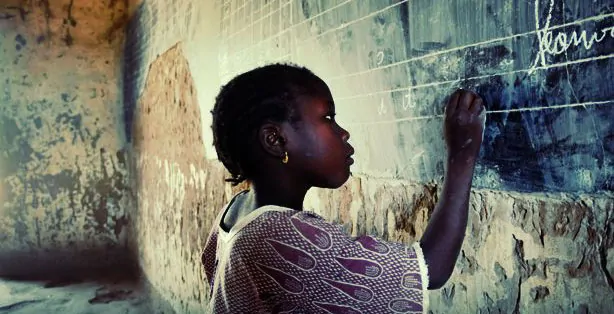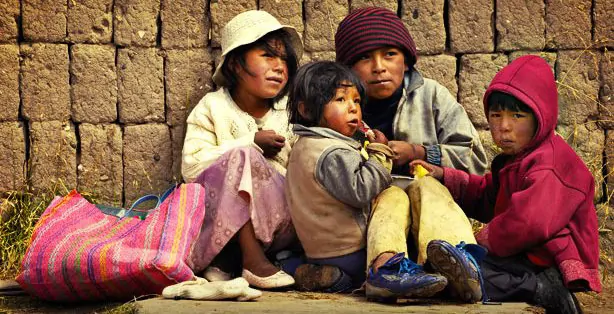
Our world is increasingly divided between rich and poor. When I was born, the richest countries were 35 times as wealthy as the poorest. Half a century later, it stood at 75 to 1. The divide more than doubled on the watch of my generation—the one that vowed to end war and save the planet.
Today, 2.6 billion people—40 percent of the world’s population—live on less than $2 a day. Americans, who make up less than 5 percent of the world’s population, live on an average $105 a day. That means the typical American has more material wealth than 96 percent of the world’s people. Even a student earning $105 a week is wealthier than 85 percent of the world.
But it’s more than money. Poverty is about lack of essentials such as food, clean water, and basic health care. Poverty is about lack of hope for the future, because your children can’t get an education—if they survive their first five years of life. Poverty is about not being able to find meaningful work. Poverty is about lack of dignity.
This is not how God intended the world to be. The apostle Paul spoke to the issue of disparity in 2 Corinthians, when he urged the wealthier Corinthian church to make a relief offering to the Christians in Jerusalem, who were in dire economic circumstances. “Our desire is not that others might be relieved while you are hard pressed,” he wrote, “but that there might be equality. At the present time your plenty will supply what they need, so that in turn their plenty will supply what you need. The goal is equality, as it is written: ‘The one who gathered much did not have too much, and the one who gathered little did not have too little’” (8:13-15, TNIV).
{sidebar id=26}
The Bible is clear that God’s people always had a responsibility to see that everyone in their society was cared for at a basic-needs level. Ruth was able to glean wheat from Boaz’s field because God had instructed those who controlled the land to not harvest everything, so that there would be food for the poor.
For Christians, this is a justice issue or, stated more bluntly, a moral issue in which those of us who have plenty seem willing to allow others to have nothing. It is not our fault that people are poor, but it is our responsibility to do something about it.
But how?
People and churches that believe tackling poverty is easy probably have never tried it. Poverty, disease, ethnic hatred and injustice are the oldest plagues on the human race and when we tackle them, we must not underestimate the challenge. The truth is that the poor know much more about their own problems than we do.
We think we know their problems and have the answers even before we speak with them face to face. Walking with the poor requires a willingness to learn from them before attempting to help them. Tackling issues of health education or economic deprivation cross culturally is rocket science, and anyone who attempts it without appreciating its complexity will regret it. We do have one thing the poor need: cash. Not just as a hand-out, but for creating businesses, jobs, and hope. Nobel Prize-winning Economist Milton Freedman explained, “The poor stay poor, not because they are lazy but because they have no access to capital.”
Microfinance is a proven method for helping impoverished communities move toward economic self-sufficiency through the provision of small loans and other financial services. Traditional loans are out of the question for the poor, who have nothing but their own labor and initiative to guarantee a loan’s repayment. So poor businesspeople and farmers often depend on private money lenders, what we would call “loan sharks,” to buy seeds and inventory.
Exorbitant interest rates make it impossible for them to get ahead.
Through microfinance, entrepreneurs in poor communities can borrow on reasonable terms. Our clients (most of them women) use the loans to start a small business, for example, to buy a sewing machine for a one-person tailoring shop. After the first loan is repaid—and 98.7 percent of our loans are—they often take a larger loan to expand their businesses, creating local jobs. In one Kenyan community, for every $1,000 in loans, nearly 11 jobs were created or sustained, and the lives of more than 28 children were improved. Once the loans are repaid, that money will be recycled over and over again to help other entrepreneurs; these loans are a powerful tool in the long-term transformation of a community.
It doesn’t take much to help people in need. The lack of clean water causes millions of needless child deaths each year. Yet the cost to bring clean water to one person costs only $1 per year. When you realize that a gift as small as a dollar can save a life, it is hard to argue that you’re not wealthy enough to make a difference. We might instead want to ask just how many lives our own wealth would enable us to save. In truth, the cost to feed the hungry, to educate children, to inoculate children, and even to provide needed surgeries to the poorest of the poor is extremely affordable and within the reach of most of us.
I’m hopeful for this generation just starting out in life. They have a much broader view of the world than mine. Technology has brought the world closer together, enabling us to share both problems and solutions. I pray they have the will and persistence to bridge the divide between rich and poor, and bring the world much closer to God’s ideal.
Richard Stearns is the president of World Vision, U.S., and author of The Hole in Our Gospel, published by Thomas Nelson.






















